
Langtang to the left, 7200 m

The village people with the children showing off their new outfits

Mother and daughter in her new outfit

Village boy with his new ball

Kaynjen Gompa from 4330 m

Prayer flags with 7000 m peaks in the background
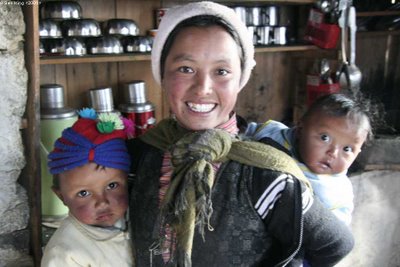
Our 24 year old host and her two beautiful children

Fuel must be carried from lower down in the valley
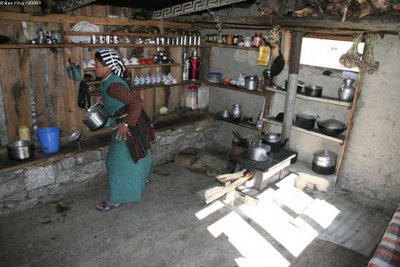
A typical kitchen in the area

My new found friend
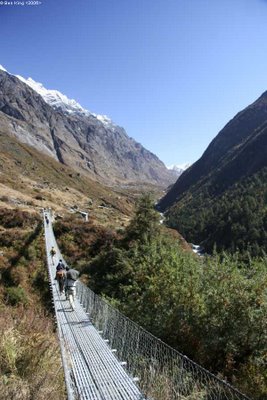
Crossing a swing bridge with the horse
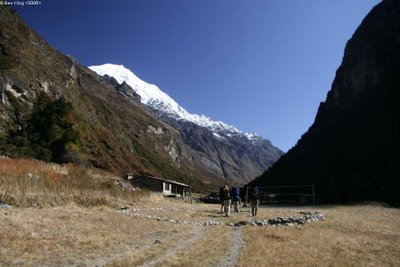
An army check point high in the valley
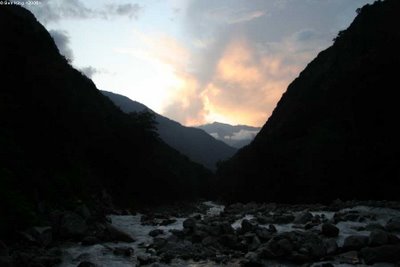
Sunset from one of the tea houses
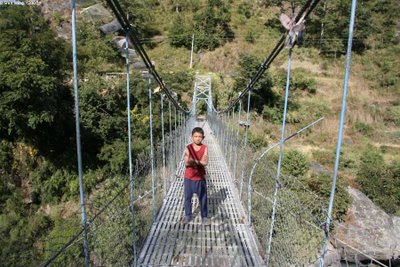
Village boy escorting us across one of many swing bridges

Village women

Women carrying firewood over great distances for cooking

Terraced crop land
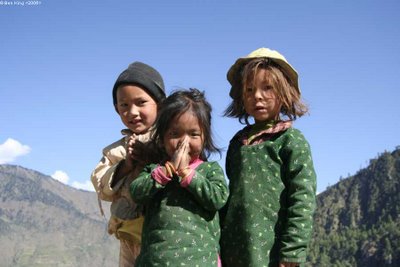
Three local children greeting us as we pass
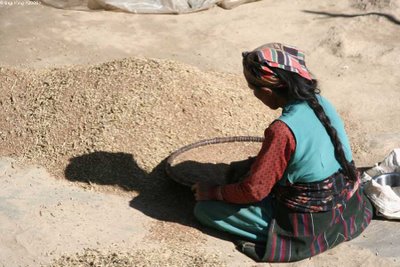
A village women winnowing her crops

Some of the porters carrying the things for the children

The town of Dunche, with the crops drying on the roofs

Maoist checkpoint, the sign reads: "Welcome to the tourist"
Sitting in one of the many good bakeries in Kathmandu to plan my week long trek, I happen to sit down next to a rather enthusiastic Italian (nothing unusual, I guess?) that happens to be heading int he same direction on his fourth trip to the mountain village to supply cloths, shoes, hats, vitamins and sun screen to the children. A short conversation later and we are off to the travel agency to sort out a permit and things for me to join the party! I am relieved because on that day a new permit system was introduced which means that all trekkers must be accompanied by a guide or porter!
In Nepal trekking is not like conventional tramping or hiking, there are so called "Tea houses" everywhere which provide at least a bed and a reasonable menu offering western food as well as the local lentil and curry with nice known as
dal baht. On top of this many of the tea houses have solar hot water and some even have electricity and western toilets! The tracks are generally well defined and easy to follow making a guide a source of information rather than a necessity. This is quite a contrast to packing food for many days and often a tent also! Basically, trekking in Nepal is easy! (when disregarding the extreme altitudes, monsoon rains, tainted water and Maoist check points). So the reality is that with a pack on your pack containing little more than a few cloths, sleeping, snacks and toilet paper, one can hardly justify paying someone else carry the load for you, even if the daily wadge is a mere $10
USD!
Rolling out of the bus station at 8 am, we make all of 300 m before the Maoist rebels (that are trying to turn Nepal into a communist state with a disturbing supporters!) set up road blocks across the entire city by placing burning tyres
across all the roads. We are informed that it will be a two hour wait!
Finally leaving the bus station at 10 am we weave in and out on the precarious single
lane road at break neck speeds! The horn being the only thing between us and oncoming traffic on the thousands of blinds corners. Each encounter with an oncoming vehicle involves the enthusiastic young conductor jumping out and using a system of: two taps - go, one tap - stop, to reverse the bus into a position suitable for passing. This usually leaves just centimeters between the wheels and the dizzying drop alongside.
After 4 hours the sealed road ends and the driving process continues along a now unsealed road which snakes back and worth up high above the valley floor, crossing slips which occurred during the monsoon and other things which make you wish you hadn't looked out the window in the first place! The consolation to all this is that one is free to ride on the roof! This makes the ride a lot more interesting, though regular low hanging power lines and trees perhaps make this a more dangerous option, although one is forced to contemplate the possibility of being saved by a lucky jump in the case of the bus going over the side, who knows?
Anyway, so after 10 hours from our initial departure we arrive! Just 110 km from Kathmandu!
First dropping back down to the valley floor to pick up some more supplies and to meet our two local guides (both of whom are friends of the Italian) and a horse before then climbing a side valley slowly, to cover the 27 km and 2300 vertical meter journey in three days. Some of the porters from Kathmandu struggle to carry the 30+ kg loads up the steep inclines. The local porters, however, take it in their stride, some carry an amazing 90 kg, in flip flops! Puts us to shame...
Climbing the final terminal moraine we see the beautiful vistas of
Kaynjen Gompa, a village only accessible on foot (or by helicopter if you are a rich tourist) at an altitude of 3800 m. All the residents have their roots in Tibet which they fled after the Chinese invasion in 1959. Still with only refugee status, these people have no passports. They live from subsistence farming of barley, buck wheat, potatoes and yak products, plus the all important tourism which has declined drastically since the Maoists began their campaign in 1999.
Early the following morning the kids are taken two by two for fitting of their new cloths. After all 20 or so children are fitted they strut around proudly outside, showing off their new wares. An amazing scene!
After getting pretty sick in the mountains I managed to do the walk out in one day and the long bus trip the next, now back in Kathmandu I await the next adventure and try to recover by eating lots and taking it easy!
 Boatman, Pokhara
Boatman, Pokhara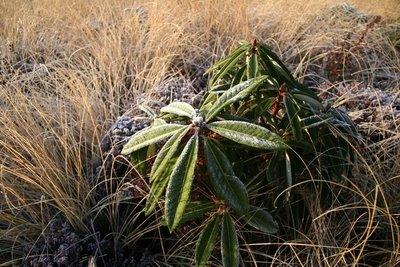 Morning frost
Morning frost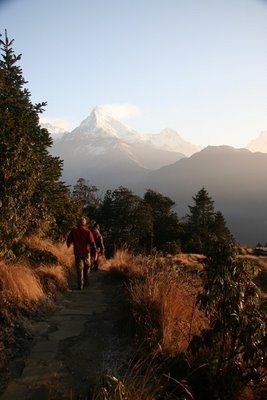 Returning for breakfast after watching the sunrise
Returning for breakfast after watching the sunrise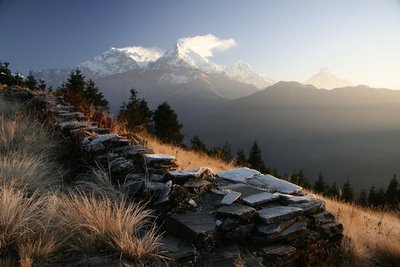 Annapurna 1, 8093 m (I think)
Annapurna 1, 8093 m (I think)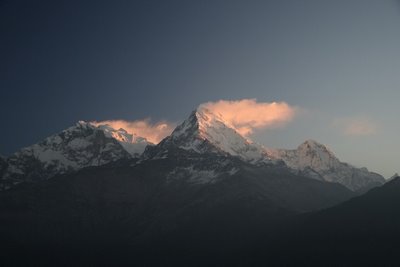 Annapurna 1
Annapurna 1 "The Fishtail"
"The Fishtail"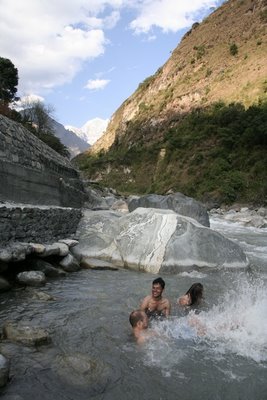 A cold dip in the river after the hot pool
A cold dip in the river after the hot pool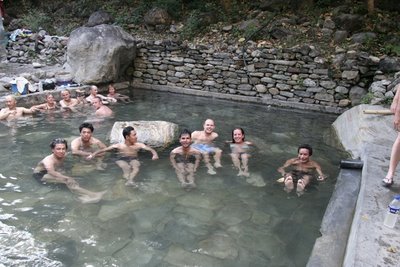 The hot pool at Tatopani
The hot pool at Tatopani Fertilising the fields
Fertilising the fields Chicken transport
Chicken transport Water transport... ;)
Water transport... ;)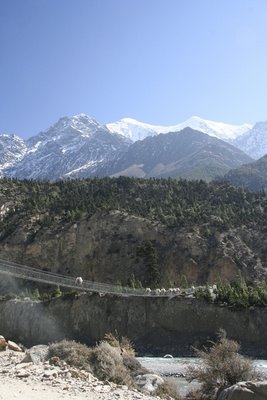 Donkey transport
Donkey transport Nepali tractor
Nepali tractor Crossing the river plains out of the high mountains
Crossing the river plains out of the high mountains
 Thorung La pass in the middle
Thorung La pass in the middle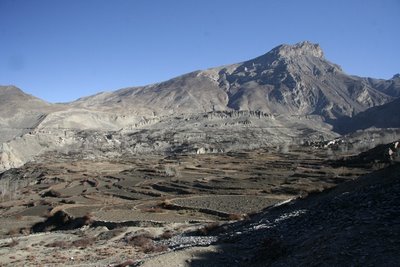 The holy city of Muktinath on the right
The holy city of Muktinath on the right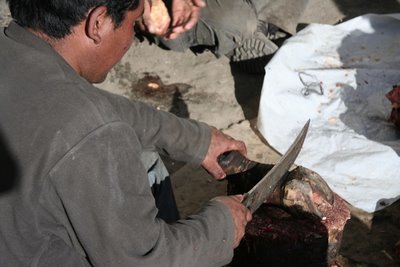 Preperation of Yak for the winter
Preperation of Yak for the winter Porters heading down from the pass
Porters heading down from the pass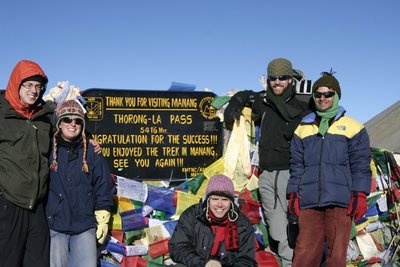 On to of the pass at 8 am
On to of the pass at 8 am Climbing to the pass
Climbing to the pass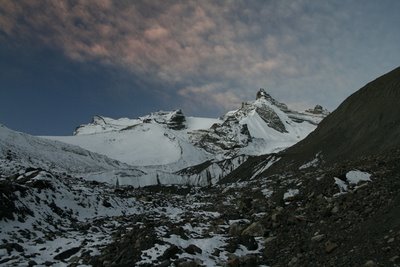 Sunrise
Sunrise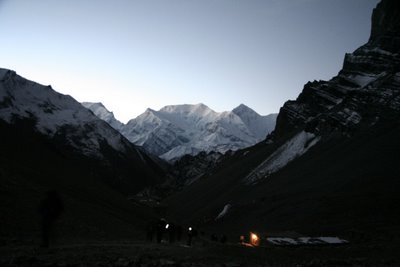 Some time after leaving camp at 5 am
Some time after leaving camp at 5 am This is actually one of the wealthiest villages in Nepal!
This is actually one of the wealthiest villages in Nepal! The frozen lake in Manang
The frozen lake in Manang The frozen lake with the Annapurna range behind
The frozen lake with the Annapurna range behind Manang
Manang A very "kanny" prayer wheel
A very "kanny" prayer wheel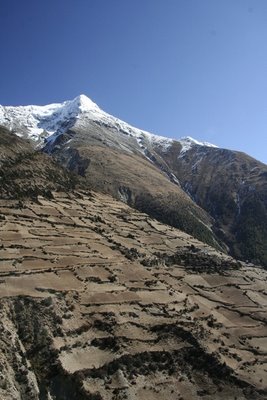 Mountain village at 3600 m
Mountain village at 3600 m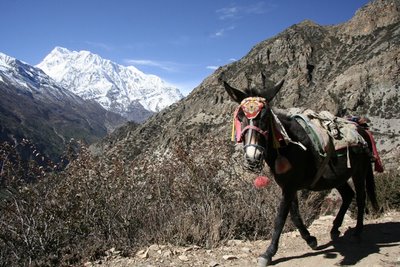 More mountain transport
More mountain transport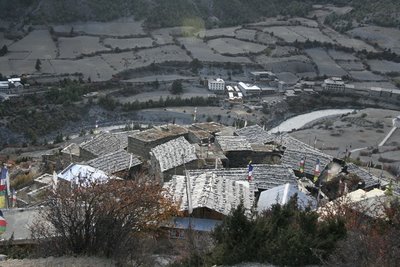 Upper Pisang with Pisang behind
Upper Pisang with Pisang behind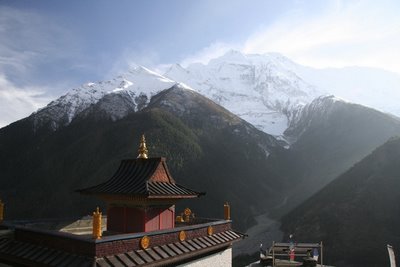 Tibetan monastery with Annapurnas behind
Tibetan monastery with Annapurnas behind
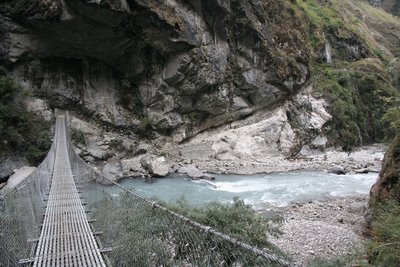 Swing bridge with manual road constrction to the right
Swing bridge with manual road constrction to the right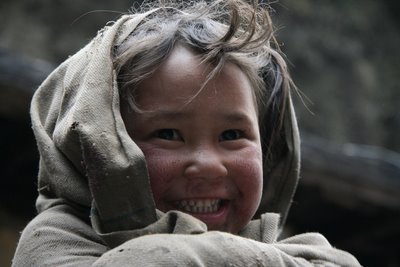 A friend, Chame
A friend, Chame Collecting fuel, Tal
Collecting fuel, Tal Read carefully!
Read carefully! Rice production
Rice production





















